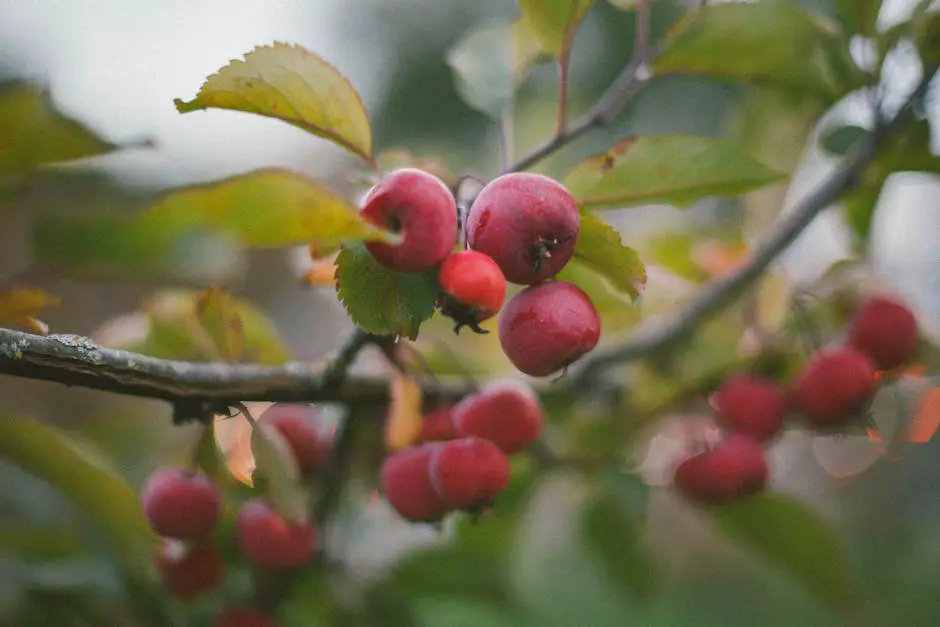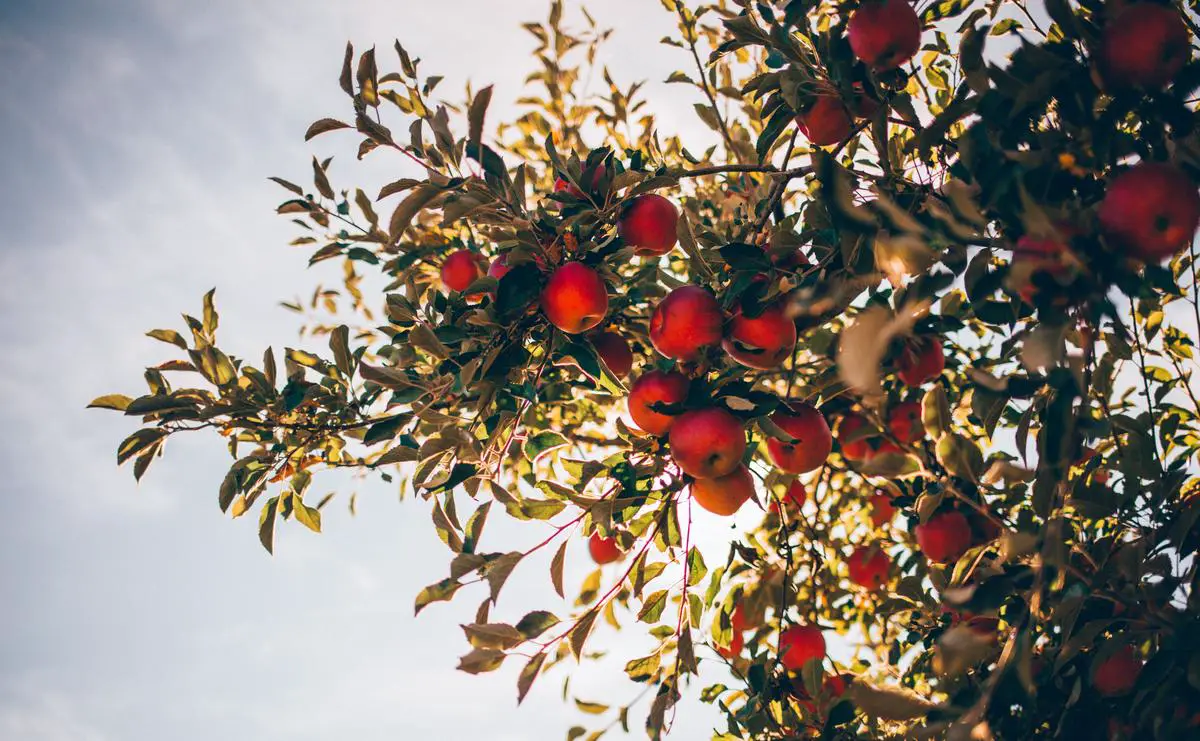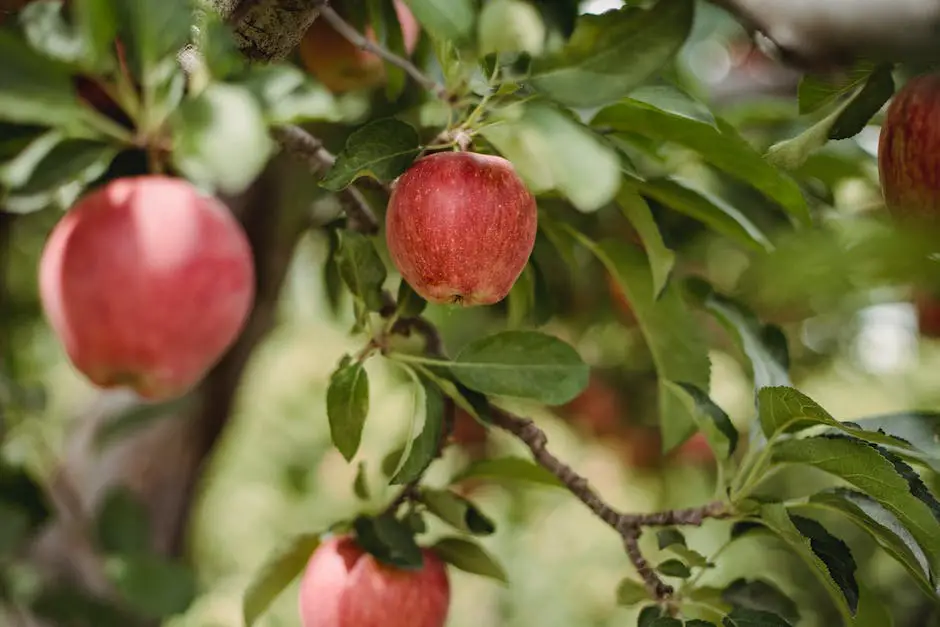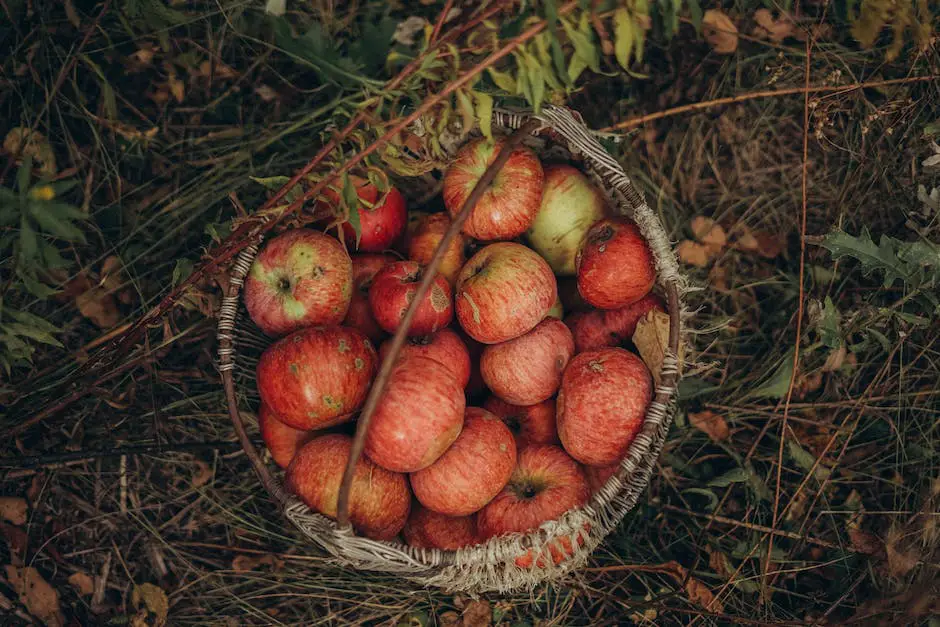A journey into the world of full-grown apple trees uncovers a myriad of fascinating facts that shed light on their anatomy, life cycle, maintenance and care needs, and their significant roles in both the ecosystem and human life. These intrinsic details not only help understand the grandeur of these fruitful entities but also the diligence and care that goes into their cultivation. This discourse delves into the unique structure of an apple tree, highlighting the specific functions of its roots, trunk, branches, leaves, flowers, and fruits. It moves further to unravel the different stages of an apple tree’s life cycle – from a tiny seed to a towering, fruit-laden tree.
Anatomy of a Full Grown Apple Tree
Anatomy of a Full Grown Apple Tree: Overview
The full-grown apple tree, scientifically named Malus domestica, stands as a testament to nature’s beauty and bounty. The structure of the tree, including its roots, trunk, branches, leaves, flowers, and fruits, are critical components that play significant roles in the tree’s overall health and productivity.
Roots
The roots are the under-the-ground structures that perform the function of absorbing water and essential nutrients from the soil. They also provide the foundation for the tree, anchoring it firmly into the ground. This network of roots is expansive, often extending two to three times the tree’s height away from the trunk, ensuring they can garner enough nutrients to support the tree’s growth.
Trunk
The apple tree’s trunk serves as the primary support structure for the tree, holding it upright and bearing the weight of the branches, leaves, flowers, and fruits. Moreover, it acts as the conduit for water, nutrients, and sugars, transporting these essentials between the roots and the leaves of the tree. The trunk of a full-grown apple tree is covered in bark, which protects cells that transport these nutrients.
Branches
Branches sprout from the trunk, providing surfaces for leaves, flowers, and fruits to grow. Each branch is covered in bark, like the trunk, and plays a role in directing nutrients and water between the tree’s various parts. Apple tree branches are pruned deliberately to facilitate good air circulation and light penetration, essential for healthy fruit development.
Leaves
Leaves, often bright green and broad on an apple tree, carry out the essential process of photosynthesis. This process allows the leaves to absorb sunlight and convert it into sugars and energy to support the tree’s growth. The leaves also release oxygen back into the atmosphere as a byproduct of photosynthesis. They are usually shed during the fall, and new leaves emerge during spring.
Flowers
The apple tree is known for its delightful flowers, typically white with a pink blush. Flowers are a crucial part of the tree’s reproduction process. They contain the male (stamens) and female (pistils) parts, and when pollinators like bees visit the flowers, pollination happens. This pollen fertilizes the flower, leading to the development of apples.
Fruits
The apple tree’s fruit is its most recognized feature. Apples develop after successful pollination, the fertilized flower transforming into a swelling fruit. These fruits contain seeds, ensuring the continuation of the tree’s life cycle. Apples are typically harvested in late summer to early fall and are enjoyed for their distinctive flavor and crisp texture. The color, size, and taste of the apples can vary greatly among different varieties of apple trees.
The life of a fully-grown apple tree is a testament to nature’s meticulously crafted design. Each part of the tree, from the nutrient-absorbing roots and solid trunk to the fruit-bearing branches and photosynthesizing leaves, plays a critical role in maintaining its overall health and productivity. Interweaving in a complex network of interdependencies, these components ensure the tree’s continued growth and fruition.

Life Cycle of an Apple Tree
The Beginning: Apple Tree Seed Germination
The journey to becoming a full-grown apple tree begins with the germination of a seed. This initial stage of life is activated when the apple seed meets water and experiences temperatures typically between 32 and 45 degrees Fahrenheit. This germination phase progresses slowly and can span from a mere fortnight to several months, subject to the prevailing growth conditions.
Upon germination, the seed sprouts a tiny root that plunges into the soil. Simultaneously, a shoot surfaces upward, reaching for sunlight. This stage, usually spanning a few weeks to a month, sees the establishment of a rudimentary root system and the emergence of the first few leaves poking out from the ground.
Sapling Stage of an Apple Tree
After the seedling has grown a few leaves, it enters the sapling stage. This stage is marked by rapid growth and development. The tree’s root system becomes more extensive and complex, allowing it to absorb more nutrients from the soil. Simultaneously, the tree continues to grow taller, and its stem becomes thicker and stronger.
On average, it takes approximately three years for an apple seedling to develop into a sapling. The length of this stage can vary greatly depending on the growing conditions, with optimal conditions potentially shortening this time period.
Adolescent Stage of an Apple Tree
The sapling then transitions into the adolescent stage where it begins to produce flowers. Apple trees usually enter this stage of development after the third year. During this stage, the tree continues to grow, and the trunk becomes even more robust.
The apple tree begins to flower in the spring, typically in April or May. The flowers, when pollinated by insects, produce small, green fruits that mature throughout the summer.
Maturity and Full Grown Apple Tree Stage
After years of growth and development, apple trees eventually reach maturity. This is usually between the fifth and tenth year of the tree’s life, although this process can be accelerated with proper care and attention. Once an apple tree is mature, it can reach heights of 20 to 30 feet and will start to bear fruit in larger quantities.
Mature apple trees produce fruit every fall season. This fruit production process is known as the harvest. Each apple tree produces thousands of apples each season, but not all of them will be suitable for consumption. Apple trees can continue to bear fruit for up to 50 years or more depending on the variety and growing conditions.
The Fascinating Journey from Seed to Fully-Grown Apple Tree
Growing an apple tree, from its humble beginnings as a seed to its majestic maturity, reveals a captivating journey. To reap the benefits of bountiful apple harvests, one must comprehend the various stages of this journey. Despite their ability to withstand time and stress, apple trees call for meticulous attention and care for achieving the best fruit yield. This involves striking the right balance between giving them just the right amount of sunlight and nutrients. This way, ensuring an apple tree’s health becomes an engaging endeavor that calls for a blend of knowledge and dedication.

Maintenance and Care of a Full Grown Apple Tree
Importance of Sunlight for a Mature Apple Tree
A fully matured apple tree needs no less than six hours of unobstructed sunlight daily. However, they have the potential to flourish even more given a few extra hours of bright light. This sunlight is crucial for the tree’s photosynthesis – a process that propels its growth and fruit production. It’s beneficial to plant the apple tree somewhere it gets bathed in morning sunshine. This not only kick-starts photosynthesis but also dries off the night’s dew, and in the process, lowers the likelihood of damaging fungal infections.
Watering Needs of a Full Grown Apple Tree
Watering is a crucial part of caring for a full-grown apple tree. The frequency of watering depends on the climate and soil type. In general, the tree should be watered deeply once a week. However, during hot, dry weather, more frequent watering might be necessary. Avoid overwatering as this can lead to root rot and other diseases. The soil should not be left soggy but should somewhat dry out between waterings. Using a soaker hose around the base of the tree can ensure a slow deep watering that reaches the roots.
Pruning a Full Grown Apple Tree
Pruning is essential as it aids in maintaining good health and promoting fruit production. Late winter, while the tree is dormant, is the best time to prune. The purpose of pruning a mature apple tree is to remove old wood and promote strong new growth, which will bear more and larger fruit, and to shape the tree. Dead, diseased, or damaged branches should be removed at any time of the year. Avoid heavy pruning as this can stress the tree and result in a decreased fruit yield.
Fertility and Apple Trees
Fertilization plays a big role in apple tree care as well. Mature apple trees thrive with an annual application of a balanced slow-release granular fertilizer, such as one with an N-P-K ratio of 10-10-10 used according to package directions. It’s often best to fertilize in early spring right before the new growth begins, but after the risk of severe cold has passed.
Health Maintenance and Disease Prevention
Apple trees can be subject to a variety of pests and diseases, including aphids, apple scab, and powdery mildew. Regular inspection of the tree for signs of disease or unwanted creatures is crucial in keeping your apple tree healthy. Using organic or synthetic pesticides or fungicides only when necessary and as per the product instructions can help combat these issues. Additionally, good organic mulching around the base of the tree discourages pests and helps to regulate soil moisture and temperature.
Improving Flowering and Fruit Yield in Apple Trees
Prioritizing your apple tree’s health is the key to enhancing its flowering and fruit production. Sunlight, water and nutrients are essential for their growth. You can significantly boost the yield of fruit by cross-pollinating from a different variety of apple tree. Moreover, it’s beneficial to occasionally thin out the fruits on heavily burdened branches during the growth period. This enables the tree to invest more energy into producing fewer apples, but with enhanced size and quality.

Harvesting and Use of Apple Fruits
Picking Apples: Optimal Timing and Process
Most apples become ready for harvest between the late summer and early fall months. However, the exact harvest timing depends on the apple variety, regional weather conditions, and local environment. You’ll know your apples are ready to be picked when the majority of the tree’s leaves have changed color and started falling. Additionally, the hue of the apples themselves will shift from green to either yellow or red, depending on the variety. You can also determine ripeness by cutting open an apple; if the seeds are brown, then the fruit is ripe.
During the harvesting process, it’s crucial to handle the apples with care to prevent bruising them. To do this, gently twist and lift each apple off its branch to avoid excessive pulling. It’s also important to abstain from shaking the tree, as this could lead to premature dropping of the unripe apples.
Post-Harvesting Apple Care and Storage
After harvesting, apples should be kept in a cool, humid environment to prolong their freshness. Store apples in a cellar, refrigerator, or any cold and dark location with good ventilation to prevent the ripened apples’ ethylene gas from motivating other apples to over-ripen. Storing apples at room temperature will cause them to deteriorate more rapidly.
If an apple has been bruised or damaged during the harvest, use it promptly to prevent it from rotting the entire batch. The ‘one bad apple spoils the bunch’ saying rings true, as one rotten apple can indeed fasten rotting for the whole group.
Incorporating Apples into Your Diet
Apples, a versatile and nutrient-dense fruit, can be enjoyed in several ways. Whether eaten raw as a high-fiber snack or used in recipes to create delicious desserts like pies, cakes, and muffins, apples offer a world of possibilities. Furthermore, using apples as a natural sweetener in puree form or adding sliced apples to salads or roasts adds texture and flavor to a variety of dishes.
Apple juice, ciders, and vinegars provide additional ways to include this nutritious fruit in your diet. And to avoid wasting any part of this beneficial fruit, consider using the cores and peels. Apple cores can be used to make apple cider vinegar or jelly, and dried peels can serve as a healthy snack or an ingredient for added taste in various preparations.
It’s worth noting that apples come in many different varieties, each offering its own unique taste and texture. Select the type that best compliments your recipe and personal preference.

Importance and Impact of Apple Trees
The Ecological Significance of Apple Trees
Apple trees, or Malus domestica as they are scientifically known, serve as more than just fruit-bearing plants. They play a crucial role in maintaining biodiversity, providing sustenance for various creatures including birds, insects, and small mammals. The blossoms of the apple tree are particularly beneficial to honey bees and other pollinators, providing them with a vital food source during the spring season.
In addition to being a hub of activity for diverse species, apple trees contribute to enhancing the quality of the soil and preventing soil erosion, thus promoting a healthier ecosystem. Furthermore, traditional and ancient orchards that house apple trees are increasingly being acknowledged as vital habitats that aid in preserving biodiversity.
Economic Value of Full Grown Apple Trees
From an economic perspective, full grown apple trees bear fruits that contribute significantly to the global economy. In the United States alone, the apple industry is valued in billions of dollars, with more than 7500 apple producers who, collectively, grow 240 million bushels of apples on average each year. This output supports a range of businesses, from local farmers and pick-your-own operations to regional distributors and major processors, creating jobs and contributing to local and national economies.
Apart from commercial apple production, apple trees also enhance property value. The addition of mature, fruit-bearing trees is often viewed as an attractive feature by prospective property buyers and can increase the overall market value of a property.
Apple Trees in Culture and History
Full grown apple trees are not just economically valuable and ecologically essential, but they also represent profound cultural and historical symbols. The apple tree is frequently used symbolically in literature, mythology, and folklore across various cultures wherein it represents knowledge, immortality, temptation, and joy.
For instance, in Greek mythology, apples were considered sacred to Aphrodite, the goddess of love. To throw an apple at someone was to symbolically declare one’s love. In Christian tradition, an apple is often depicted as the forbidden fruit in the Garden of Eden. It’s not just the fruit, but also the apple tree that holds significance, referenced in the famous tale of Sir Isaac Newton’s discovery of the law of gravity.
Historically, apple trees played a vital role in the settlement of America. Early settlers brought apple tree seedlings across seas as they established their homesteads. John Chapman, also known as Johnny Appleseed, cemented the apple tree’s place in American folklore through his mission of planting apple trees across the Midwest in the 1800s. Today, apple trees continue to remain a significant part of the American landscape, accentuating orchards, backyards, and urban spaces.

As we unravel the marvels of the apple trees, we are not only enlightened by their ecological impact and contribution to biodiversity but also their economic value, symbolism in culture and history. Harvesting of apple fruits is a rewarding experience, where one gets to reap the benefits of hard work and patience. The fruits’ versatility in consumption and incorporation into various diets plays a significant role in global food culture. Therefore, learning about apple trees is not just about understanding their growth and cultivation but also about acknowledging their immense contribution to the environment and human lives.
